With its cobalt-blue seas, formidable ancient history, and stunning resorts, Crete is the archetypal Grecian paradise
But there’s far more to Greece’s largest island than just sun, sea and sand. Its historic sites, vibrant cities, and rugged mountainous landscapes make it one of the most unique, and at times most popular, destinations in the Med.
This might explain why ABTA, the travel association, has placed Crete on its ‘one to watch’ list and why its experts described it as “spectacular”. Crete’s “impressible joie de vivre” and warm hospitality is “guaranteed” to restore holidaymakers’ love of life, so they say.
Exploring all of Crete would take months; with 3,260 square miles of landmass, it is the fifth largest island in the Med after Sicily, Sardinia, Cyprus and Corsica. But a week or two is plenty to soak up the island’s charm and a few of its must-see attractions.
Where to Stay and Eat
The European headed to the seaside resort of Agioi Apostoli, a few kilometres west of Chania, Crete’s second-largest city. Located on a small peninsula, the region is a popular destination for Dutch, German, Danish and British holidaymakers thanks to its sheltered bays, azure waters, and white-sand beaches. Expect to pay between €10 and €20 for two sun loungers and a parasol.
There are numerous hotels to cater for all tastes and budgets. Hotel Talos is a fantastic option for families, or there’s the five-star Atlantica Kalliston Resort for a more luxurious getaway. The Artemis Paradise resort, meanwhile, has a wonderful pool, evening entertainment, and cocktails to die for. The area’s beaches are only a short walk away.
The region is a paradise for foodies, offering an array of traditional Cretan dishes made from locally sourced ingredients. The Cretan diet, known for its health benefits, emphasizes fresh vegetables, olive oil, fish, and a variety of cheeses. Local beers and wines are plentiful. If you’re feeling brave, wash it all down with a shot or two of raki, the Cretan firewater of choice.
Restaurants are reasonably priced, with main courses costing around €20. Many tavernas are family-owned and run, and the recipes have been passed down through the generations. The atmosphere is often convivial, with diners treated like guests in someone’s home. This personal touch is a refreshing change from the more impersonal dining experiences that have become commonplace in other tourist-heavy destinations.
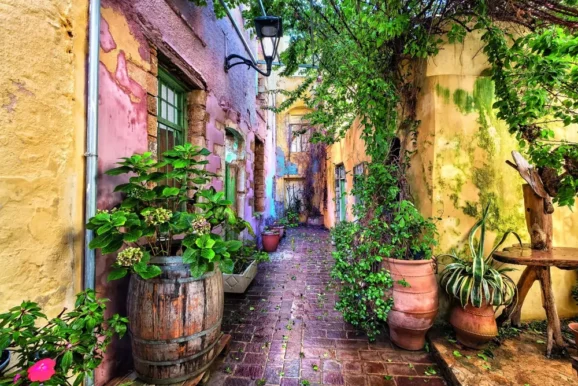
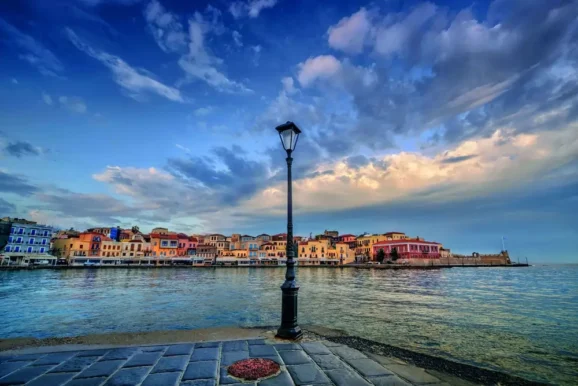
What to Do
Agioi Apostoli is a short bus ride from Chania (pronounced ‘Hania’), a city with layers of cultural influences from Minoan to Byzantine, Venetian, and Ottoman periods. This rich historical tapestry is evident in its architecture, cuisine, and daily life. The old town of Chania, with its narrow cobblestone streets and well-preserved buildings, is a must. Its Venetian Harbor, a highlight of the city, meanwhile, is lined with pastel-coloured buildings and a promenade that invites leisurely strolls. Here, the imposing lighthouse and the Firkas Fortress stand as silent sentinels of a bygone era, offering stunning views of the sunset. The Maritime Museum of Crete is also worth a visit.
Unlike some other European cities, where historical sites are sometimes overwhelmed by throngs of tourists, Chania manages to maintain a delicate balance. The city has embraced tourism without compromising its cultural heritage or local way of life. This is partly due to the efforts of local authorities and the community, who have worked together to preserve Chania’s character while making it accessible to visitors.
The city’s cultural calendar is filled with events and festivals that celebrate Cretan traditions and customs. The Carnival of Chania, held before Lent, is a lively celebration featuring parades, music, and dancing. The Easter celebrations are another highlight, offering visitors a chance to experience the unique customs and culinary traditions associated with this important religious holiday.
In autumn, the grape harvest season brings a series of wine festivals, where visitors can sample the region’s famous wines, such as the red Mandilaria and the crisp white Vidiano. These festivals provide a great opportunity to learn about the island’s winemaking traditions and enjoy local music and dance performances.
Chania’s natural beauty is another major draw, offering a variety of outdoor activities for nature enthusiasts. The city’s location, nestled between the sea and the White Mountains, provides a stunning backdrop for activities like hiking, swimming, and exploring the numerous gorges and caves.
Beyond the city itself, Chania serves as a gateway to exploring the rest of Crete. The island’s diverse landscapes range from the fertile plains of the Messara Valley to the rugged mountains of Sfakia and the pristine beaches of the southern coast. Each region has its own unique character and attractions, making Crete a destination that offers endless exploration.
Visitors can explore ancient archaeological sites like the Palace of Knossos, the heart of the Minoan civilization, or the cave of Zeus, where mythological tales come to life. The island’s rich history is complemented by its vibrant contemporary culture, with thriving arts and music scenes, particularly in cities like Heraklion and Rethymno.
For those interested in outdoor activities, Crete offers numerous hiking trails, including the E4 European long-distance path, which crosses the island from west to east. The island’s varied terrain also provides opportunities for mountain biking, rock climbing, and even skiing in the winter months.
From Agioi Apostoli, a tourist road train operates daily trips to some of the nearby sights and attractions. These include Samaria Gorge, one of the longest gorges in Europe and a must-visit for any nature lover. The challenging hike through the gorge takes visitors through diverse landscapes, from dense forests to arid rocky terrains, culminating at the Libyan Sea. The gorge is home to a variety of wildlife, including the kri-kri (Cretan wild goat), and offers breathtaking views at every turn.
An hour’s ride will take you to Elafonissi, one of Europe’s most popular beaches. Known for its unique pink sands and crystal-clear turquoise waters, this beach is a slice of paradise that looks like it’s been plucked straight out of a postcard. The shallow lagoon formed by a sandbar makes it ideal for wading and safe for children to play in, and the vibrant marine life makes it a haven for snorkelers.
However, its stunning beauty does come at a price. During high season, Elafonissi can get incredibly crowded. The influx of tourists means that finding a quiet spot can be challenging, and the beach’s facilities struggle to cope with the numbers. There is a limited selection of food and drink options available, which often results in long waits and high prices. Additionally, reaching the more secluded parts of the beach, which are quieter and offer more space, can be difficult, especially for families with young children or those carrying a lot of beach gear.
Despite these challenges, Elafonissi remains a must-visit, particularly if you can go early in the morning or later in the afternoon when the crowds are thinner. The sheer beauty of the place is worth the effort, and the experience of wading through its warm, shallow waters is unforgettable.
No trip to Chania and its surrounds would be complete without a boat trip. We enjoyed a two-hour tour of the islands on board the Albatross, with ‘Captain Mike’ at the helm, for 250 EUROS. It was worth every penny. Trips can be booked on his website.
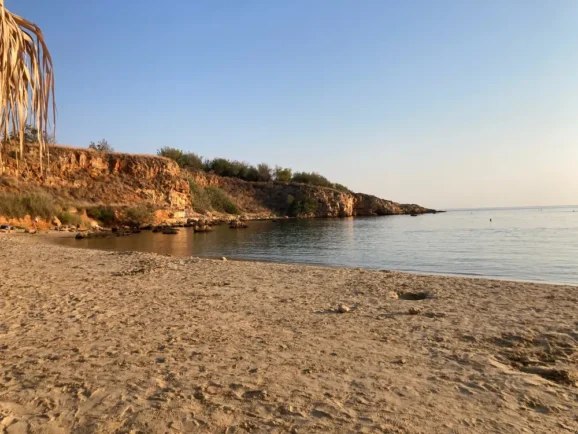
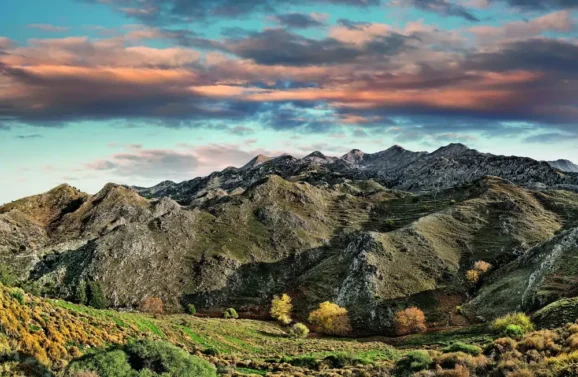
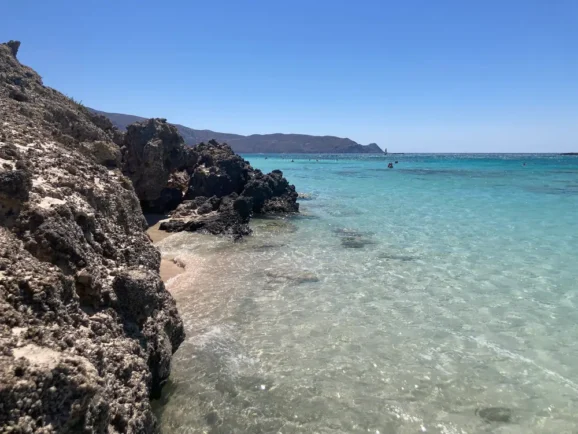
Why Crete?
If you were to ask any of the returning Brits who visit Crete year after year, the island’s appeal lies mainly in its genuine warmth and hospitality of its people. At a time when many tourist destinations are struggling with the challenges of overtourism, Chania stands out as a model of how to welcome visitors while preserving local culture and environment.
The people of Chania are known for their philoxenia—a term that translates to “love of strangers”—which is deeply embedded in Cretan culture. This warm hospitality is evident in every interaction, whether you’re wandering through the bustling Agora (market) or dining in a local taverna. Unlike the increasingly commercialized interactions seen in other tourist-heavy destinations, in Chania, you’ll find genuine conversations and heartfelt welcomes. Locals are eager to share their stories, traditions, and the hidden gems of their city.
The warm reception in Chania stands in stark contrast to the challenges faced by other popular European tourist destinations. Cities like Venice and Barcelona, which have become synonymous with overtourism, are now struggling with the negative impacts of massive visitor numbers. These impacts include strain on infrastructure, rising living costs for locals, and the erosion of cultural authenticity.
Venice, for instance, has faced significant challenges with overcrowding, leading to measures like limiting access to popular sites and imposing entry fees for tourists. The city’s fragile infrastructure and unique lagoon environment have been strained under the pressure of millions of visitors each year, prompting local authorities to take drastic steps to protect the city’s heritage and ensure a better quality of life for its residents.
Barcelona has also experienced similar issues, with locals increasingly expressing frustration over the influx of tourists. The city’s popular attractions, like La Sagrada Família and Park Güell, often see overwhelming crowds, making it difficult for both locals and visitors to enjoy these spaces. The rise in short-term rental properties has also contributed to skyrocketing housing costs, making it challenging for residents to find affordable housing.
In contrast, Chania has managed to avoid many of these pitfalls by fostering a tourism model that emphasizes quality over quantity. The city’s commitment to sustainable tourism practices ensures that visitors can enjoy an authentic experience without overwhelming the local community or environment. This approach not only benefits tourists but also the local population, who can continue to live and work in their city without being displaced by tourism-related developments.

Pictures © Chania Tourism Bureau/The European






